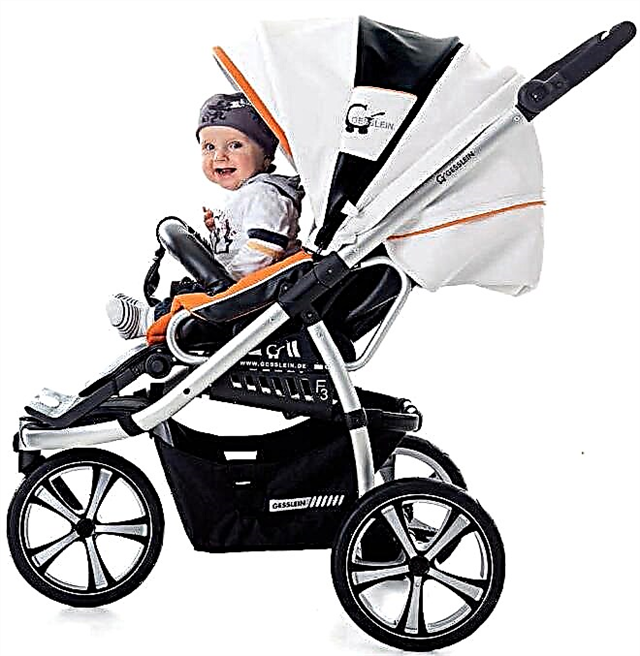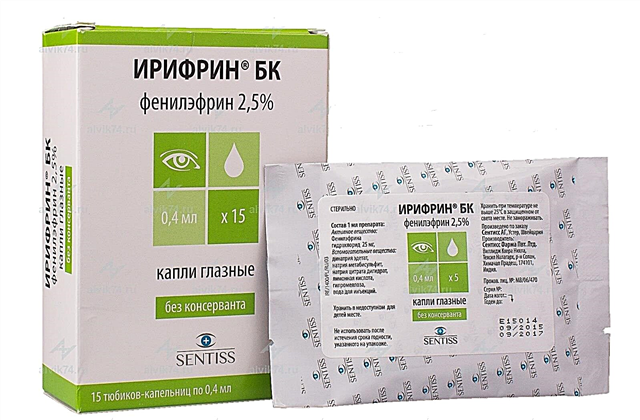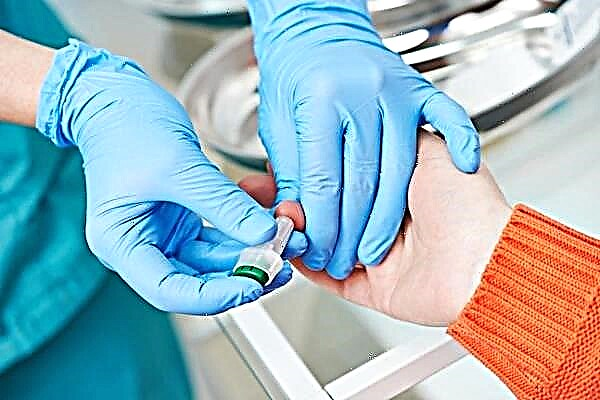
Newborns and children of the first year of life quite often "surprise" parents with a wide variety of skin rashes. One of the varieties of dermatitis - seborrheic - needs separate explanation. We will tell you about what it is and what to do if a child has dermatitis seborrhea in this article.

What it is
Seborrheic dermatitis is a chronic inflammation of the upper layers of the skin. It should be noted that not all areas of the skin are affected, but only those where there is a maximum accumulation of sebaceous glands, for example, the scalp, face. The main causative agents of the disease are the yeast-like fungi Malassezia restricta and Malassezia globosa.
In almost all people on the planet, these fungi live well on the skin, being an integral part of its normal microflora. It is no coincidence that they "chose" the places around the sebaceous glands - the secretion of these glands is an excellent breeding ground for fungi.
In the process of vital activity, these fungi release polyunsaturated acids, which irritate the skin, reacting with some of the substances it contains.


A normal healthy body can regulate the number of such fungi, however, changes in the hormonal balance, immune changes can lead to an increase in the number of fungi colonies, and then irritation and peeling are inevitable. Moreover, they will appear exactly where sebum (fat) is produced most of all.


Causes of occurrence
In adults, seborrheic dermatitis is always an alarming symptom that sometimes accompanies rather serious ailments. In newborns, this form of skin inflammation in the vast majority of cases is a variant of the physiological norm. So, the skin of babies is more delicate and thin, and the functions of the sebaceous glands are not yet perfect.
Therefore, from birth to six months, seborrheic dermatitis occurs to varying degrees in every fourth or fifth baby.

Most doctors are inclined to believe that seborrheic manifestations in newborns are irrefutable evidence of the connection of the disease with hormonal "cataclysms" in the body. In the first months of life, the baby is strongly influenced by the so-called maternal hormones, which the mother generously shared with the baby while he was still in her womb. For the same reason, seborrhea later appears in some adolescents during puberty. Hormonal riot - this is exactly the factor that triggers the activity of yeast-like fungi such as Malassezia.


Affects the appearance of such dermatitis and the state of immunity of babies... After birth, it is only a set of antibodies obtained from the mother, that is, innate immunity. The infant's own body is extremely weak and imperfect. It has yet to form and develop. That is why it is so difficult for the natural defense system to cope with yeast-like fungi if the child is not yet a year old.

The cause of the appearance of characteristic formations on the head and body may be hereditary factors - Often babies "inherit" seborrhea if one of the parents or close relatives suffers from it chronically. Moreover, it is not the disease itself that is inherited, but only a tendency to increased sebum secretion, that is, the baby's glands work in an enhanced mode and produce more fat than is required to ensure the protective functions of the skin.

From external factors, the most favorable for the development of seborrheic dermatitis are considered the winter season, excessive sweating of the baby, especially if he is wrapped up warmly and "supplied" with several caps in addition. Aggressive for baby skin toilet soap or other cosmetic products, which parents can use when bathing a child, also provoke increased work of the sebaceous glands and the occurrence of seborrhea.


At the second stage, separate and scattered scales, which have a grayish or yellowish color, are combined into a single crust-like surface. Such seborrheic crusts can appear in a child not only on the head, but also on the neck, face, forehead, cheeks, and body. Quite often, in this case, the groin and armpits are affected.
Symptoms
The characteristic signs of seborrheic dermatitis are the appearance of scales, flaking. Most often this happens in the scalp, since it is there that the sebaceous glands in infants work most actively. The fact is that the child's head also performs an additional function - it participates in heat transfer. That is why a child who is hot has a head sweat in the first place. Under the influence of heat and sweat, the sebaceous glands significantly intensify their activity.

Seborrhea does not look like an allergy, and it is almost impossible to confuse a reaction to a new milk formula and damage to the sebaceous glands. The fact is that under the crusts there is no reddening zone characteristic of allergies. When a fragment of a crust is removed, the skin under it remains light and non-edematous. In older children and adults, seborrhea can be accompanied by itching. With regard to newborns, doctors are practically unanimous - the disease does not give him itching and discomfort.

Much depends on what type of seborrheic dermatitis is observed in a particular child. Medicine distinguishes between three types of ailment:
- Wet seborrhea. With it, the production of secretion by the sebaceous glands is increased, too much sebum is secreted.
- Dry seborrhea. With it, the scales have a dry appearance, they themselves easily fall off due to insufficient production of sebum.
- Combined (mixed) seborrhea. This type of disease combines the symptoms of the first two types.
Seborrhea does not affect the general condition of the child: it has no effect on the baby's appetite or sleep.
Forecasts
Congenital seborrheic dermatitis, which the child received as a "gift" from one of the relatives, is practically not subject to correction. Treatment is generally ineffective. With an acquired disease, the forecasts are more optimistic. After elimination of the causes that caused the disease, skin manifestations can be quickly "overcome".

In the case of newborn children, congenital seborrhea can be talked about only in exceptional cases, since this genetic cause is quite rare.
The rest of the factors that influence the development of such dermatitis lend themselves well to correction, and sometimes go away on their own, as in the case of dermatitis, which depends on hormonal factors. As your own hormonal levels develop, seborrhea fades away. This usually happens between the first six months and one year of life.

Treatment
Seborrheic dermatitis in a baby does not need drug treatment for at least a year. In most cases, it goes away on its own after 4-6 months of independent life. Only in rare cases, crust formations on the head and skin persist for up to 2-3 years.

It is usually sufficient to observe certain hygiene and general rules that will allow the manifestation of such dermatitis to pass as soon as possible:
- Caps and hats are not needed at home. In any case, for a child with seborrheic dermatitis. You should only put on a cap or a hat on the baby outside, while dressing the baby should be appropriate for the weather, since excessive sweating provokes the growth of fungi. From the same position, the room temperature should be revised. It should be no higher than 20 degrees Celsius. In this climate, sweating is significantly reduced.
- Bathing requires only baby cosmetics... You should not wash your child with shampoos and foams. It is enough if parents use the most common baby soap to wash their hair once a week. Excessive use of even hypoallergenic soap, created specifically for children, also disrupts the function of the sebaceous glands.


Getting rid of seborrheic crusts can be quite simple. If the damage is extensive and causes a lot of anxiety (for mom, but not for the baby!), Then you can use special antifungal shampoos. This is well-known Nizoral Shampoo, Sebulex.
It is better to start treatment of the scalp with softening the crusts. For this, the grandmothers used warmed up sunflower oil. Today it is used, and vaseline oil, and baby cream. After lubrication, you should wait about 15-20 minutes, gently comb out all the crusts with a comb or a special brush for the head (they are soft and easily and painlessly removed), and then wash the child's head with an antifungal shampoo.
It is enough to do this once a week. More frequent washing and combing injures delicate skin. It is useful to complete water procedures by lubricating places that are free of crusts, "Bepantenom" or "La-Cree", products that moderately dry the inflamed areas of the skin, where necessary, and moisturize where the skin is excessively dry. Recently, a line of cosmetics has become very popular "Emolium"... For babies in this line, you can pick up a good moisturizer and baby moisturizing soap.
Treatment of severe forms of seborrheic dermatitis requires medication, but only a doctor can prescribe them. Only a specialist is able to distinguish a physiological rash from a pathological one that needs medical correction.


If the rash is common to areas of the body and the baby is anxious when touched, then ointments based on hydrocortisone or clotrimazole may be prescribed. If, during the formation of crusts or inept attempts to remove them, a secondary bacterial infection has joined, antibiotic ointments may be prescribed.

Compliance with the rules for processing seborrheic crusts will help to avoid complications. They consist in a strict parenting algorithm:
- moisturizing and softening crusts;
- combing out soft crusts;
- the washing up;
- treatment with moisturizing or drying creams, and if prescribed by a doctor, with a drug.

It is absolutely impossible to touch dry crusts and try to eliminate them mechanically, this leads to injury to the skin and the addition of a secondary infection. From folk remedies, pediatricians do not mind adding to the bathing water a decoction of chamomile, oak bark and string.
Practical advice
If the baby has seborrheic dermatitis, a nursing mother should refuse to eat fatty milk, butter and fermented milk products with a high content of animal fat. It is better to give preference to fat-free kefir, milk with a fat content of no more than 1.5%. Mothers of babies who are breastfed should also refuse to take high-carbohydrate foods, baked goods. Instead, you need to introduce more fluid to make your breast milk less fatty and less sweet.


If a baby is bottle-fed, it is important to make sure that he eats completely adapted milk mixture... If necessary, choose a different mixture, preferably with a hypoallergenic mark on the package. Such food is more expensive, but for a child prone to seborrhea, it may well be sufficient to quickly and completely get rid of the symptoms of the disease.
It is important to rethink the whole approach to child hygiene. The cleaner his diapers are, the more often he swims without soap, the less he sweats and overeats, the faster the seborrheic "milky" crusts will pass without the likelihood of their return.


All about seborrheic dermatitis in infants and newborns, see the following video.



